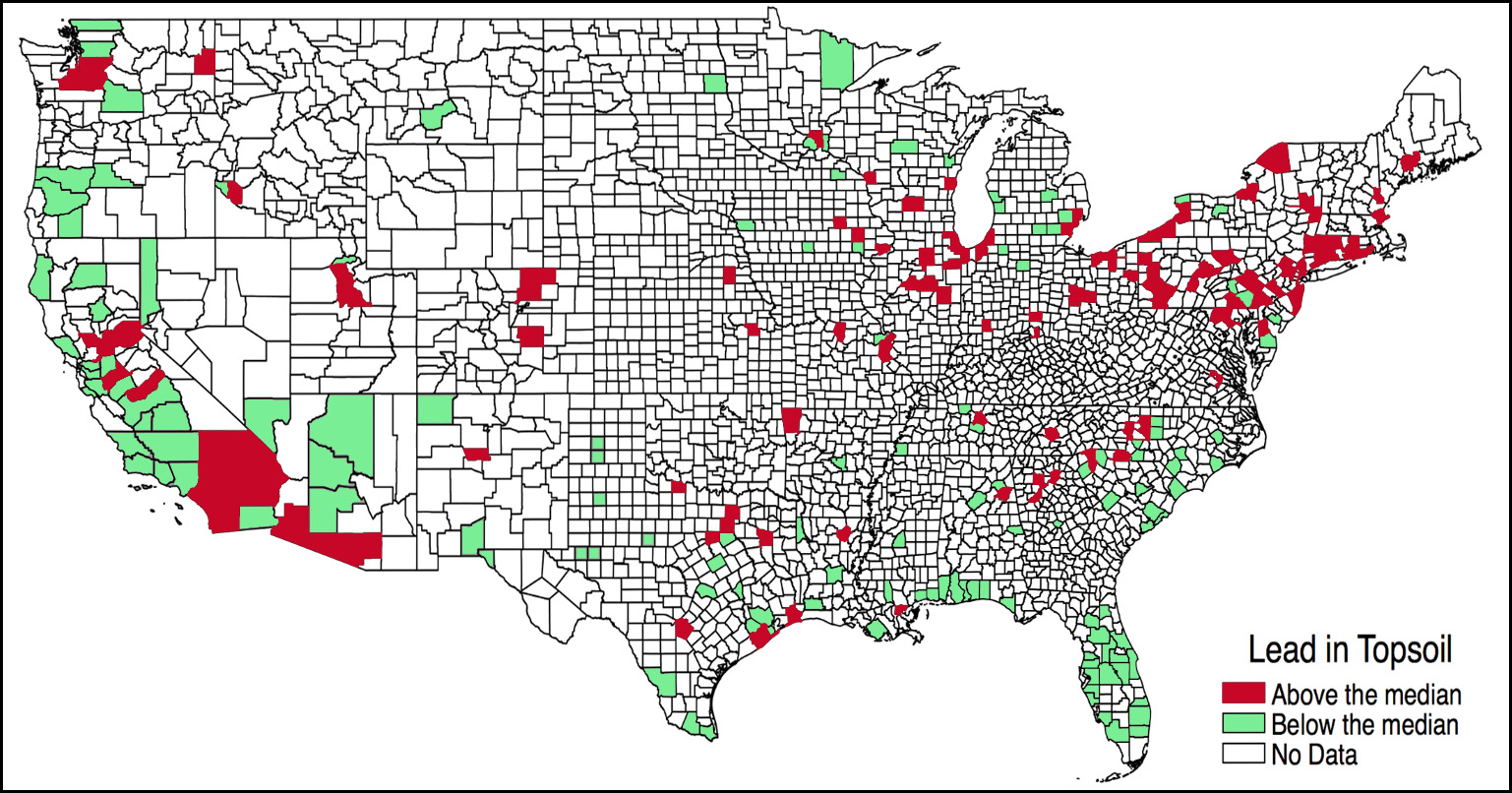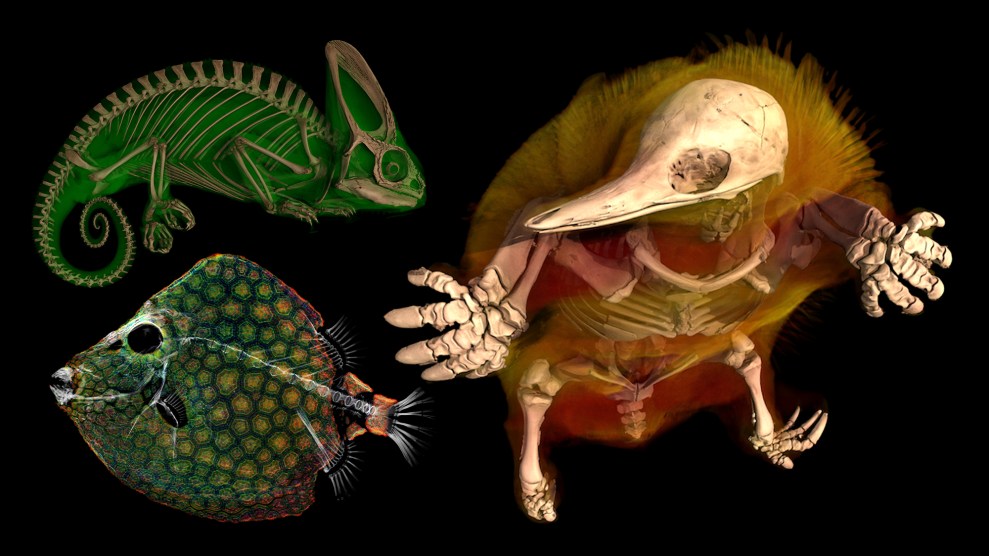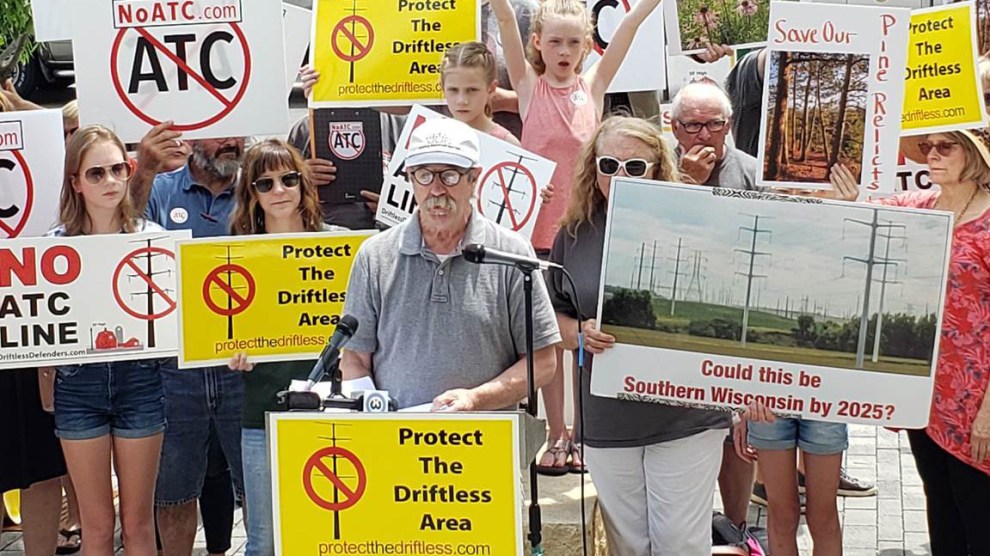A new study out of Carnegie-Mellon examines the effect of topsoil lead contamination on cognitive problems among toddlers. To start, the authors construct a map of large US counties showing which ones are above and below average in lead contamination:

The green counties have a topsoil lead concentration of about 10 ppm, while the red counties have a concentration of about 20 ppm. The results of the study are simple:
- Overall, about 3.5 percent of boys report cognitive difficulties.
- In counties with high lead concentrations, this increases to 7.5 percent.
- In urban areas with high lead concentrations, it increases to 11 percent.
Consistent with previous studies, the effects on girls are much smaller (though still positive).
The reason I’m highlighting this study is not because it shows that lead poisoning affects cognitive ability. That’s well-known and uncontroversial. However, it also shows specifically that lead in topsoil is a significant factor in producing those cognitive problems. And if topsoil lead affects cognitive ability, then topsoil lead also affects the likelihood of being prone to violent crime later in life. I’ve been banging the drum of topsoil lead for a while—it’s almost certainly a bigger problem than lead in drinking water—and this study is yet another that confirms it’s a serious problem.
Topsoil remediation is eminently achievable. In Norway, they’ve been doing it for years with a goal of zero lead in topsoil. But it’s obviously a big, expensive job. It’s too bad we no longer have leadership in this country that cares about such things.

















